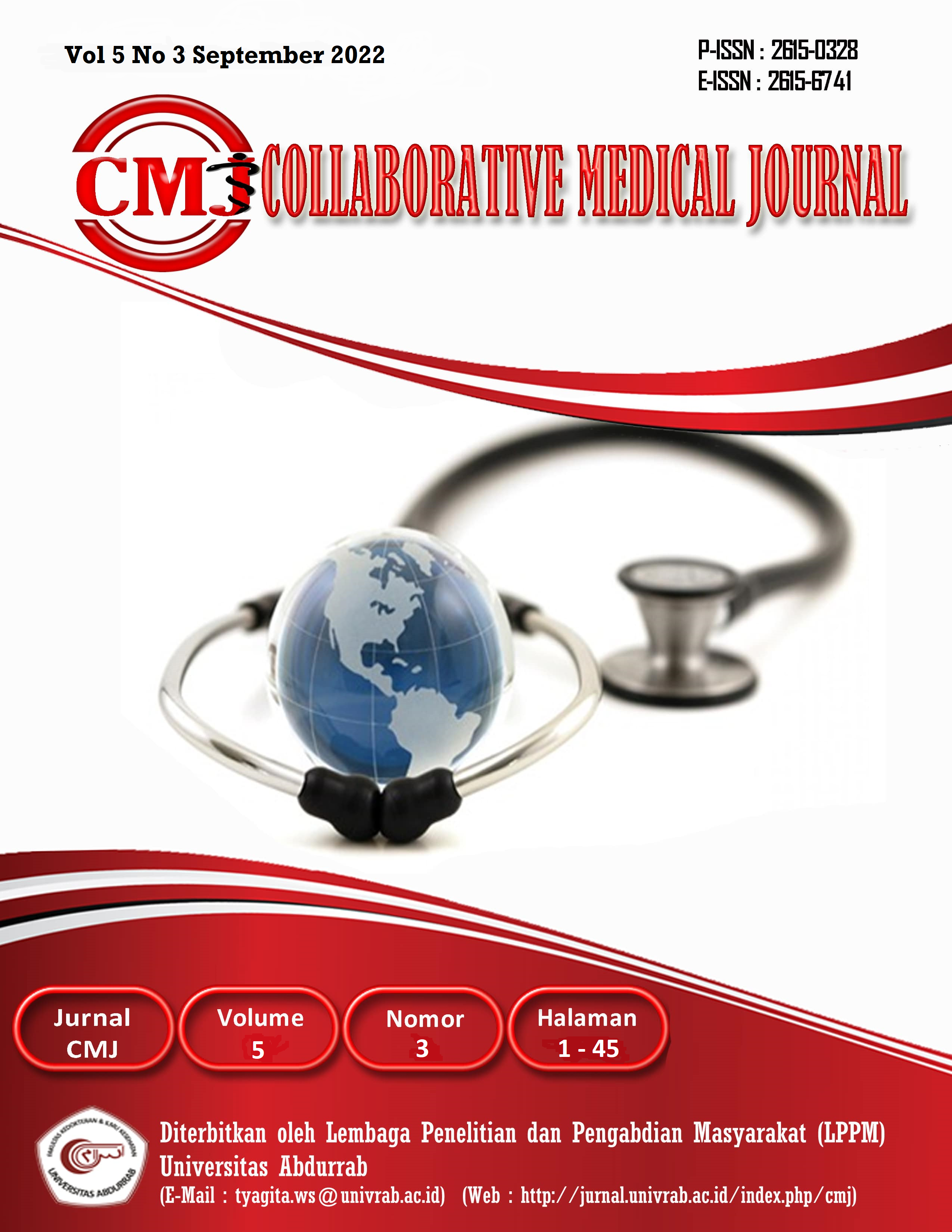HUBUNGAN STRESS KERJA DENGAN KELELAHAN KERJA PADA PEKERJA DI PABRIK KELAPA SAWIT TAHUN 2020
Abstract
Occupational fatigue is any condition that is accompanied by decrease in efficiency and endurance at work resulting in work errors, decreased productivity leading to work accidents. Data from the International Labor Organization (ILO) 2013 stated that fatigue causes two million workers to die each year from work accidents. The Ministry of Manpower and Transmigration of the Republic of Indonesia via Director General of Labor Inspection Development in 2012 stated that the average number of workplace accidents in Indonesia is 847 cases per day, in which 36% of the causes are occupational fatigue. There are many factors causing occupational fatigue, including work stress. Work stress can cause emotional reactions, physiological changes and potentially cause occupational fatigue at 61.7%.To investigate the relationship between work stress with occupational fatigue on workers in the POM PT. X Rokan Hulu Tahun 2020. Analytic observational research using cross-sectional approach with 135 samples. This research used a total sampling and analyzed with chi-square test. There is a significant relationship between work stress and occupational fatigue (p- value = 0,000).
References
[2] A. D. Widyastuti, “Hubungan Stres Kerja Dengan Kelelahan Kerja Pada Pekerja Area Workshop Konstruksi Box Truck,” Indonesia. J. Occup. Saf. Helath, vol. 6, no. 2, pp. 216–224, 2017.
[3] L. Setyawati, Selintas tentang Kelelahan Kerja. Yogyakarta: Amara Books, 2013.
[4] P. Hamalainen, T. Jukka, and T. B. Kiat, “Global Estimates of Occupational Accidental and Work-Related Illnesses 2017,” IECON Proc. (Industrial Electron. Conf., p. 8, 2017.
[5] T. H. Irfani, “The Prevalence of Occupational Injuries and Illnesses in Asean: Comparison Between Indonesia And Thailand,” Public Heal. Indones., vol. 1, no. 1, Dec. 2015.
[6] K. Wulandari, B. Widjasena, and Ekawati, “Hubungan Beban Kerja Fisik Manual dan Iklim Kerja pada Kelelahan Pekerja Konstruksi Bagian Project Renovasi Workshop Mekanik,”
J. Kesehat. Masy., vol. 4, no. 3, pp. 425–435, 2016.
[7] J. Ty. Dessy, “Hubungan Stress Kerja dengan Kelelahan Kerja Pada Pekerja Bagian Pengolahan di Pabrik Kelapa Sawit Pagar Merbabu PTPN. II Tanjung Morawa,” 2017.
[8] Tarwaka, Bakri, and L. Sudiajeng, Ergonomi untuk
Keselamatan, Kesehatan Kerja dan Produktivitas. Surakarta: UNIBA PRESS, 2004.
[9] Tarwaka, Ergonomi Industri (Dasar- dasar Pengetahuan Ergonomi dan Aplikasi di Tempat Kerja). Surakarta: Harapan Press, 2015.
[10] P. . Suma’mur, Higiene Perusahaan dan Kesehatan Kerja (Hiperkes). Jakarta: Sagung Seto, 2013.
[11] A. M. S. Budiono, R. M. S. Jusuf, and
A. Pusparini, Bunga Rampai Hiperkes dan KK. Semarang: Badan Penerbit Universitas Diponegoro Semarang, 2016.
[12] Soedirman and S. Prawirakusumah, Kesehatan Kerja Dalam Perspektif Hiperkes dan Keselamatan Kerja. Jakarta: Erlangga Medical Series, 2014.
[13] NCBI, “Physiology Cortisol,” 2019. [Online]. Available:
https://www.ncbi.nlm.nih.gov/books/N BK538239/.
[14] M. A. Zona, “Management Insight,” J. Ilm. Manaj., vol. 5, no. 3, p. 353, 2014.
Copyright (c) 2023 Collaborative Medical Journal (CMJ)

This work is licensed under a Creative Commons Attribution-NonCommercial-ShareAlike 4.0 International License.
1. Copyright of all journal manuscripts is held by the Collaborative Medical Journal (CMJ)
2. Formal legal provisions to access digital articles of electronic journal are subject to the provision of the Creative Commons Attribution-ShareAlike license (CC BY-NC-SA), which means that Collaborative Medical Journal (CMJ) is rightful to keep, transfer media/format, manage in the form of databases, maintain, and publish articles.
3. Published manuscripts both printed and electronic are open access for educational, research, and library purposes. Additionally, the editorial board is not responsible for any violations of copyright law.
licensed under a Creative Commons Attribution-ShareAlike 4.0 International License.
 PDF
PDF
 Abstract views: 329
Abstract views: 329
 downloads: 314
downloads: 314

 :
:




